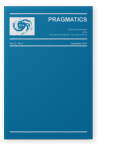Vol. 22:3 (2012) ► pp.477–499
Ethnicity and codeswitching
Ethnic differences in grammatical and pragmatic patterns of codeswitching in the free state
This article aims to compare three distinct grammatical and conversational patterns of code-switching, which it tentatively links to three different South African ethnoracial labels: White, Coloured and Black. It forms a continuation of a previous article in which correlations were established between Afrikaans-English code-switching patterns and White and Coloured ethnicities. The typological framework used is derived from Muysken, and the hypotheses are based on his predictions as to which type of grammatical CS (i.e. insertional, alternational, congruent lexicalisation) will dominate in which linguistic and sociolinguistic settings. Apart from strengthening the idea of a correlation between patterns of language variation and ethnicity in general, the article explores the theoretical possibility of specific social factors overriding linguistic constraints in determining the grammatical form of CS patterns. In this regard, it will be shown that – on account of specific social factors underlying ethnicity – CS between two typologically unrelated languages, namely Sesotho and English, can exhibit more marks of congruent lexicalization than CS between two typologically related languages, namely Afrikaans and English, while – from the point of view of linguistic constraints – insertional/alternational CS would be expected in the former language pair and congruent lexicalization in the latter. That finding will be placed against the background of different pragmatic norms regulating the conversational use of CS within the Black Sesotho-speaking community (which we will describe as ‘language mixing’ in Auer’s sense) and within the Afrikaans speech community (which in the case of Whites we will describe as tending more towards ‘language alternation’ in Auer’s sense, and in the case of Coloureds as occupying an intermediate position between language alternation and language mixing). The summary of findings on grammatical and conversational CS patterns across ethnic samples will finally be placed against the background of ethnicity and its specific definition in the South African context.
